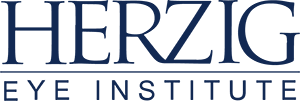Herzig Eye Institute in Refractive Surgery on May 22, 2019
At Herzig Eye Institute, our surgeons have access to the most advanced technology under one roof, allowing us to match the right procedure with the right patient. Our surgeons are highly trained, board-certified ophthalmologists with experience performing laser vision correction procedures, including PRK, LASIK, and SMILE. Each procedure is safe, proven and effective, but each also differs from the others in important ways.
It’s important to familiarize yourself with the different laser vision correction options. Here, Dr. Sheldon Herzig breaks down the differences between PRK, LASIK, and SMILE.
What Do LASIK, SMILE and PRK Treat?
LASIK (laser assisted in situ keratomileusis) is the most widely-performed laser vision correction procedure in the world. It is designed to treat a wide range of nearsightedness, farsightedness and astigmatism. PRK (photorefractive keratectomy) also treats nearsightedness, farsightedness and astigmatism. SMILE (small incision lenticule extraction) is the latest generation in the evolution of laser vision correction. It is designed to treat nearsightedness and astigmatism.
Procedural Differences
LASIK involves reshaping the cornea so the light that enters the eye is focused, improving vision. During LASIK, a femtosecond laser creates a thin circular flap on the tissue of the outer cornea to expose the bed of the cornea. Next, an excimer laser removes a small amount of tissue to reshape the cornea. The corneal flap is then carefully placed back where it will heal itself over time.
During PRK, the cornea is also reshaped but no corneal flap is created. Instead, the top cell layer of the cornea, known as the epithelium, is removed, exposing the internal tissues of the cornea. An excimer laser reshapes the cornea to correct vision. Following PRK, a soft contact lens is placed over the treated eye, acting as a bandage while the epithelium heals. PRK may be an appropriate choice for patients who do not qualify for LASIK, including those with very thin corneas.
SMILE differs from LASIK and PRK in that it does not use an excimer laser to remove corneal tissue nor does it involve creating a corneal flap. Instead, a femtosecond laser is used to create a small lens-shaped piece of tissue, known as a lenticule, within the cornea. The same laser is used to create a tiny incision on the surface of the cornea to extract the lenticule. This process reshapes the cornea, allowing it to focus light more clearly on the retina, improving vision. Most patients who are candidates for LASIK and PRK are candidates for SMILE.
Recovery Details
Recovery with LASIK and SMILE is similar; most patients are able to resume their normal activities the day after surgery. An advantage to SMILE is that it minimizes the likelihood of dry eye after surgery. PRK does involve a slightly lengthier recovery than the other two procedures; patients are able to resume all normal activities approximately one week after surgery.
Which Is Right for You?
The only way to determine which laser vision correction procedure is right for you is to schedule a personal consultation. During your consultation, we will thoroughly evaluate your eye health and vision needs to determine the appropriate treatment option. Utilizing state-of-the-art technology and equipment to diagnose your vision problems and design a customized treatment plan leads to the best visual outcomes.
Are you interested in learning more about LASIK Eye Surgery? Get started on the road towards crisper and clearer vision by scheduling a consultation with us. Contact Herzig Eye Institute to speak to a member of our team today.




